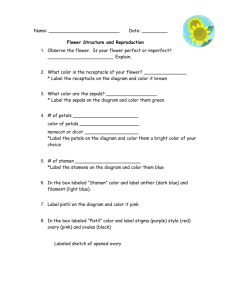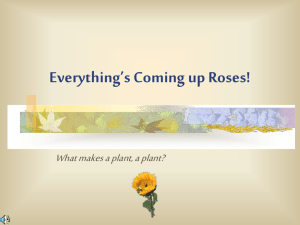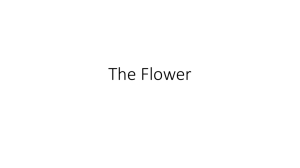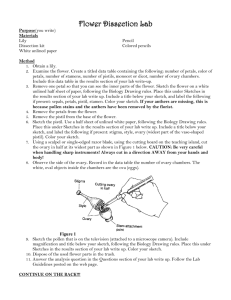Flower Anatomy Lab
advertisement
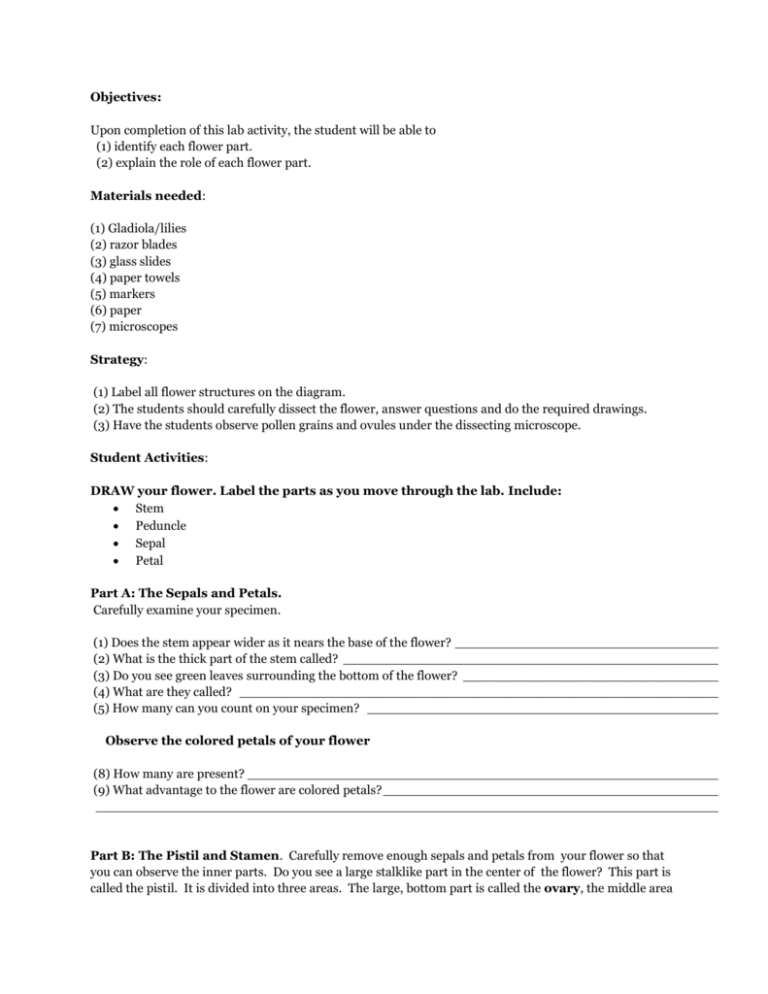
Objectives: Upon completion of this lab activity, the student will be able to (1) identify each flower part. (2) explain the role of each flower part. Materials needed: (1) Gladiola/lilies (2) razor blades (3) glass slides (4) paper towels (5) markers (6) paper (7) microscopes Strategy: (1) Label all flower structures on the diagram. (2) The students should carefully dissect the flower, answer questions and do the required drawings. (3) Have the students observe pollen grains and ovules under the dissecting microscope. Student Activities: DRAW your flower. Label the parts as you move through the lab. Include: Stem Peduncle Sepal Petal Part A: The Sepals and Petals. Carefully examine your specimen. (1) Does the stem appear wider as it nears the base of the flower? _________________________________ (2) What is the thick part of the stem called? _______________________________________________ (3) Do you see green leaves surrounding the bottom of the flower? ________________________________ (4) What are they called? ____________________________________________________________ (5) How many can you count on your specimen? ____________________________________________ Observe the colored petals of your flower (8) How many are present? ___________________________________________________________ (9) What advantage to the flower are colored petals? __________________________________________ ______________________________________________________________________________ Part B: The Pistil and Stamen. Carefully remove enough sepals and petals from your flower so that you can observe the inner parts. Do you see a large stalklike part in the center of the flower? This part is called the pistil. It is divided into three areas. The large, bottom part is called the ovary, the middle area is called the style and the top part is called the stigma. (10) Draw and label the three areas of the pistil: stigma, style and ovary. Surrounding the pistil are several upright stalks. (11) What are these called? ____________________________________________________________ If you observe carefully, you can see structures attached to the tops of the stalks. (12) What are these called? ___________________________________________________________ (13) What do they produce? ___________________________________________________________ Part C: The Ovary. Carefully remove the pistil from your flower. With your razor blade, cut across the ovary. (14) What do you see inside the ovary? ____________________________________________________ (16) What is the biological function of the flower? ____________________________________________ (17) Draw the stamen and label the anther and the filament. (18) Name the three ways that pollen may be carried. __________________________________________ ______________________________________________________________________________ (19) What is a perfect flower? __________________________________________________________ (20) What is a complete flower? ________________________________________________________
